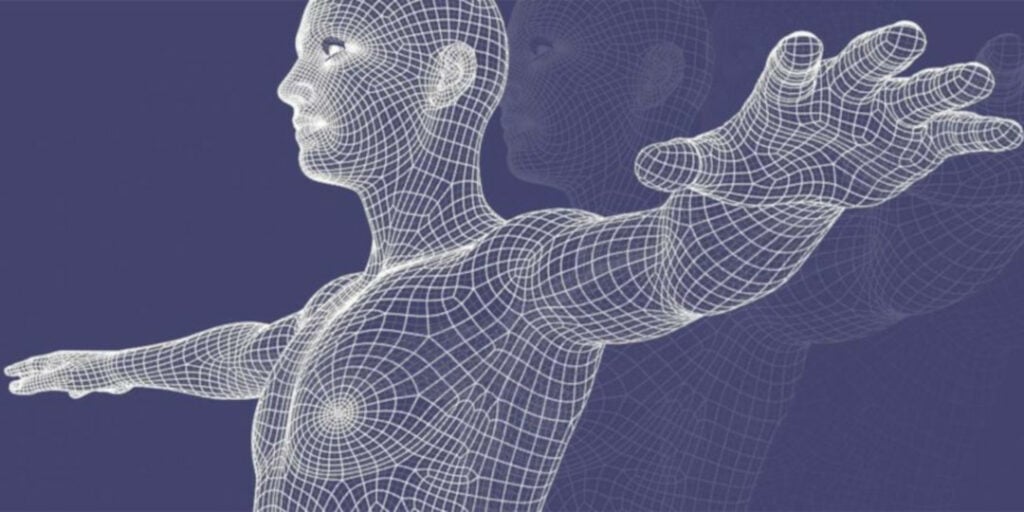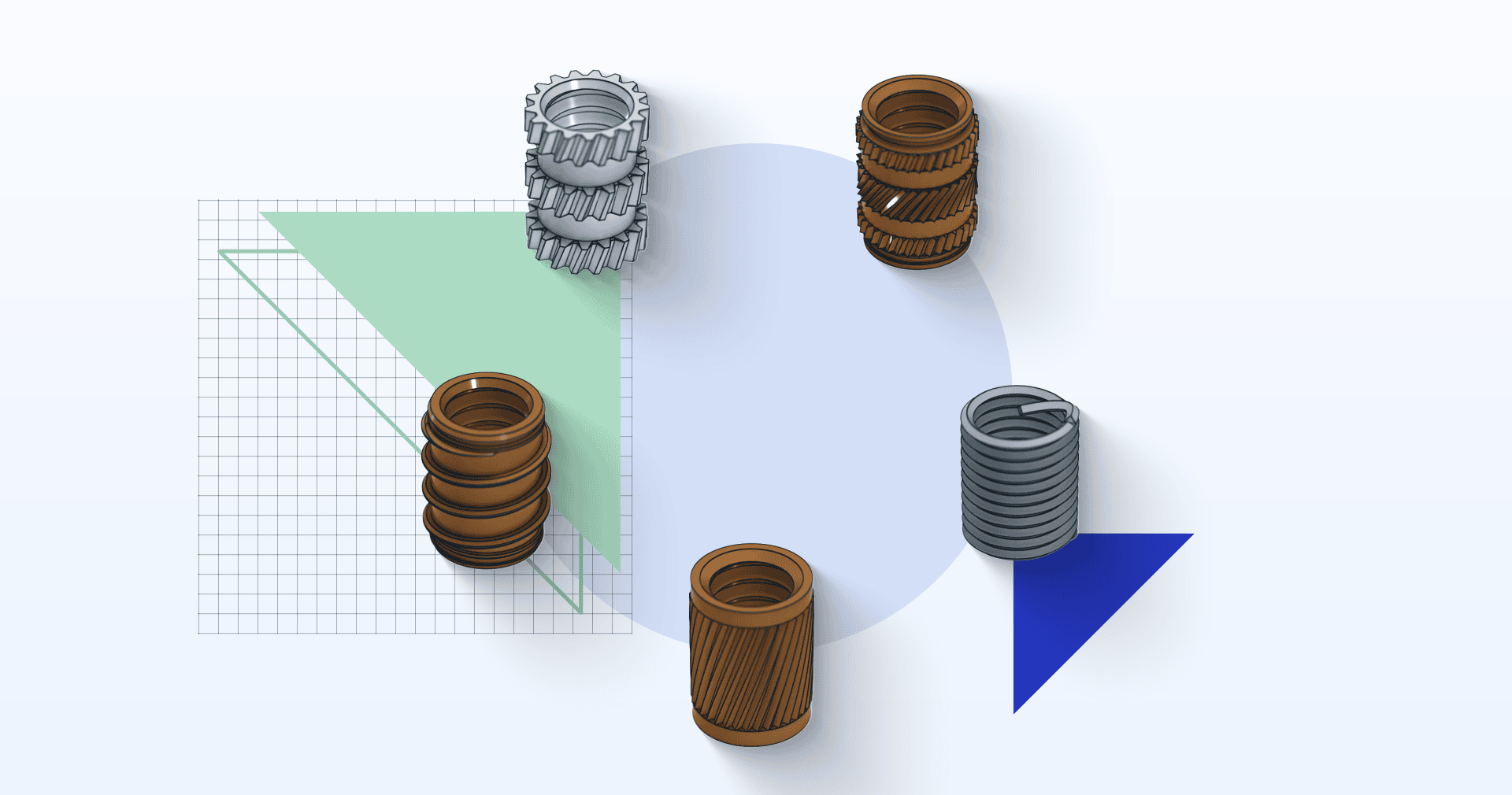3D Printing Workflow: What Files & Software Needed?
To better understand 3D printing file formats, it is essential to grasp how 3D printing itself works. 3D printers create objects by building them layer by layer. Therefore, after designing a model and saving it in a specific 3D printing file format, the next crucial step is slicing. Slicing is the process where the solid model is divided into numerous thin horizontal layers. This step is essential only if you operate a 3D printer yourself.

Slicing software scans these layers and uses the information to generate the G-Code which is a set of detailed instructions dictating how the 3D printer should move to produce the desired object. This G-Code file is then sent to the printer for execution. Slicing software, essential for preparing a model for printing, does not work with standard 3D file formats such as STEP, IPT, and SLDPRT. These formats must first be converted to an additive manufacturing file format.
Some 3D printers come equipped with their own native slicing software, allowing users to directly use the model in the 3D printing file format without needing third-party software. This integration can streamline the printing process and enhance compatibility between the model file and the printer’s capabilities.

The information contained in the CAD file is crucial for successful 3D printing. The file format determines the specific data the file carries, which is used to generate the necessary machine code. Essential information includes geometry, texture, color, and material. Regular 3D CAD file formats often do not encode this data specifically for 3D printing, hence the need for specialized 3D printing file formats.
Among the various 3D printing file formats available today, the most ubiquitous are STL, OBJ, AMF, and 3MF. Let’s see how they compare.
STL, 3MF, AMF, and OBJ Compared
| File format | Extension | Use case | Characteristics | Limitations | File size* |
| STL | .stl | Prototyping and simple parts, e.g., basic mechanical components | Stores geometry as a collection of triangles; universally supported across 3D printing platforms | No support for color, texture, or detailed material properties | Typically 1-25 MB, can be optimized down to 100 KB with reduced detail |
| 3MF | .3mf | Modern, versatile applications, e.g., consumer products with detailed features, mixed-material objects | Compact and efficient; supports advanced features like color, material, and complex geometries | Growing support but not yet as universal as STL; may require modern software | 2-30 MB, efficient compression keeps sizes smaller |
| AMF | .amf | Advanced applications needing detailed attributes, e.g., multi-material prototypes, complex color patterns | Supports multiple materials, colors, and textures; ideal for intricate designs | Less widely supported by 3D printers and software; more complex than STL | Typically 10-100 MB, can be larger with complex data |
| OBJ | .obj | Detailed models requiring texture and color, e.g., character models in gaming, complex architectural designs | Supports texture, color, and material properties; allows for high-detail rendering | Can be large and complex due to additional data; may require managing multiple files (geometry, textures) | Without textures: 5-50 MB; with textures: up to several hundred MB |
*File size estimates are based on typical use cases and can vary significantly depending on the specific details and complexity of the model.
STL Files
The STL file format (STereoLithography) is the most widely used format in 3D printing. Its simplicity and universal compatibility make it the go-to choice for a wide range of 3D CAD software and 3D printing applications.

One key characteristic of STL is that it saves geometry using tessellations. Tessellation is the process of covering (tiling) a surface with a series of geometric shapes in such a way that there are no gaps or overlaps. In STL files, a 3D model’s geometry is encoded by numerous triangles covering the model’s surfaces.
For curved surfaces, a large number of arbitrarily small triangles are required to cover the surfaces. However, the larger the number of triangles employed in a model, the bigger the file size.
Another distinguishing characteristic of the STL format is that it only stores geometry data. Other data related to a model such as color, texture, and material are left out. This wasn’t a problem when printers could only print in one color and one material at a time. It may still not be a problem if you require a simple prototype. However, with advancements in 3D printing such as multi-color and multi-material printing, and with the use of 3D printing for producing fully functional, ready-to-use objects, the STL file format may well be on its way out.
Pros
- Compatible with virtually every hardware and software in the world of 3D printing
- Most widely used and shared file format for 3D printing. Millions of STL models are available for easy download online
Cons
- Can only store geometry data. Color, texture, and material data are left out
- The level of detail is limited. For example, curved surfaces are approximated
- The higher the accuracy of the file, the larger it would be
- There may be holes and overlapping triangles in the tessellation as the file format is error-prone. Note that imperfections can be detected and fixed using STL repair tools. This, however, is time-consuming
- Scale and units are not specified
AMF Files
The AMF (Additive Manufacturing File) 3D printing file format is considered to be an updated version of STL. It was developed exclusively for additive manufacturing by the ASTM (American Society for Testing Materials) in 2013 to address the limitations of STL files.
Like STL, AMF stores geometry data using triangular tessellation. However, the triangles in AMF can curve, resulting in accurate data representation. This also results in much smaller file sizes as a smaller amount of triangles are required to accurately represent curved surfaces.
Also, AMF files can store color, texture, material, duplicate, orientation, and lattice data, as well as metadata. This makes them far more technically superior than their STL counterparts.

Pros
- Can store all possible data and metadata about a model
- Scale can be specified in various units
- Very low possibility of error
- Small file size
Cons
- Has limited support
- Adoption has been slow
- Not supported by all 3D printing platforms and software.
3MF Files
After analysing the shortcomings and slow adoption of the AMF file format, some of the biggest names in 3D printing including Autodesk, 3D Systems, Stratasys, HP, Microsoft came together to form a body known as the 3MF consortium. This body developed the 3MF 3D printing file format which is very similar to but much more widely accepted than AMF.

The industry influence and extensive customer base of the 3MF consortium, as well as the functionality of the 3MF 3D printing file format, are responsible for its wide acceptance.
3MF has all the technical properties of AMF. It used curved triangular tessellations to encode geometry. It can also store colour, texture, material, and orientation data, and is highly accurate.
Data is stored in the human-readable XML format (as opposed to binary) for ease of development and modification. 3MF files are mostly error-free and are considered as ready-to-print, something that is very much appreciated in 3D printing.
Pros
- Relatively popular and is compatible with dozens of softwares
- Stores geometry data accurately
- Can store all data related to a model
- Stores all data, metadata, and properties in a single archive
Cons
- Not compatible across all platforms
- Too complex for simple applications
- May become a proprietary file format
OBJ Files
Developed by WaveFront Technologies, the OBJ file format was originally used in graphics design as a neutral interchange file format. With the development of multicolor and multi-material printing, the file format was later adopted by the 3D printing industry.
In terms of popularity, OBJ is well-known, but behind STL. However, unlike STL which only stores geometry data, OBJ can store geometry, color, texture, and material data. Color data is stored in a separate companion MTL (Material Template). An OBJ file has to be shared with its corresponding MTL file for color printing to be possible.
Another key characteristic of the OBJ format is that it allows you to choose the way the geometry of your model is encoded. You can create tessellations using various shapes such as polygons and quadrilaterals, and not just triangles. You are also able to use more advanced and precise methods such as free-form curves and surfaces. These allow OBJ files to store models with far greater accuracy.
Pros
- Stores geometry, color, texture, and material data accurately
- Open-source, neutral standard file format widely supported by softwares
Cons
- Contains a large amount of complex data. This makes sharing or editing time-consuming
- Color and texture data are stored in a separate file
STEP Files
STEP (STP) files are a standard format used in CAD and engineering. They store detailed 3D models with precise geometries and are ideal for complex engineering designs and assemblies.
Can I use STP for 3D Printing?
Yes, but with some caveats. These files can be used for getting a quote (for example, with the Xometry Instant Quoting Engine®), but they usually can’t be used directly for 3D printing and need to be converted into the formats native for 3D printing. This conversion can be done using various CAD software tools such as SolidWorks or online converters.
Can I convert STL into STP?
Converting STL to STP is challenging because STL files only contain surface geometry without the parametric data used in STP. The reverse, converting STP to STL, is more straightforward using CAD software but may lose some of the original detail and complexity.

How to Resize 3D Printing Files
- Scaling tool: Import the model into a CAD of 3D modeling software (e.g. Blender, Tinkercad, or Fusion 360) and apply the scaling tool to adjust size proportionally
- Adjust file resolution: Apply the “Reduce” or “Simplify” function of Meshmixer or similar tools to to lower detail while maintaining geometry (by reducing the the number of triangles in STL files)
- Compress the file: Convert models to formats like 3MF for built-in compression. This reduces file size without changing dimensions
When resizing 3D printing files, it’s important to maintain the model’s proportions to avoid distortion. Always check that the resized model fits within your printer’s build volume and meets your design requirements. For functional parts, ensure that resizing does not affect their ability to fit together or operate correctly. Additionally, be mindful of the model’s detail and resolution, especially when reducing file size, to preserve critical features and overall quality.

Upload Your 3D Files and Get A Quote
In conclusion, we recommend the STL formats for simple geometry and single-color prototypes. If you intend to print simple parts in color, then the OBJ is a better option (even if the texture and color data are stored in a separate file). The 3MF and AMF 3D printing file formats are the most technically superior of the lot as they both store every information on the model. They are great for complex multi-part, multicolor, and multi-material objects. They also stand out for their ease of file sharing as all data and metadata are stored in compact, compressed files. If you have compatible necessary supporting software, feel free to go for AMF. Otherwise, 3MF is the safer option as it is more popular and more likely to be compatible with supporting software.
Xometry offers 3D printing services for 7 additive manufacturing technologies. Simply upload your CAD file to our Instant Quotine Engine to get a quote with prices and lead times.
Using CAD softwares? Get real-time pricing and design-for-manufacturing feedback from Xometry without leaving your Autodesk Fusion 360 and SOLIDWORKS interface thanks to the Xometry add-ins.
 Europe
Europe  Türkiye
Türkiye  United Kingdom
United Kingdom  Global
Global 

 Login with my Xometry account
Login with my Xometry account  2
2










Comment(2)